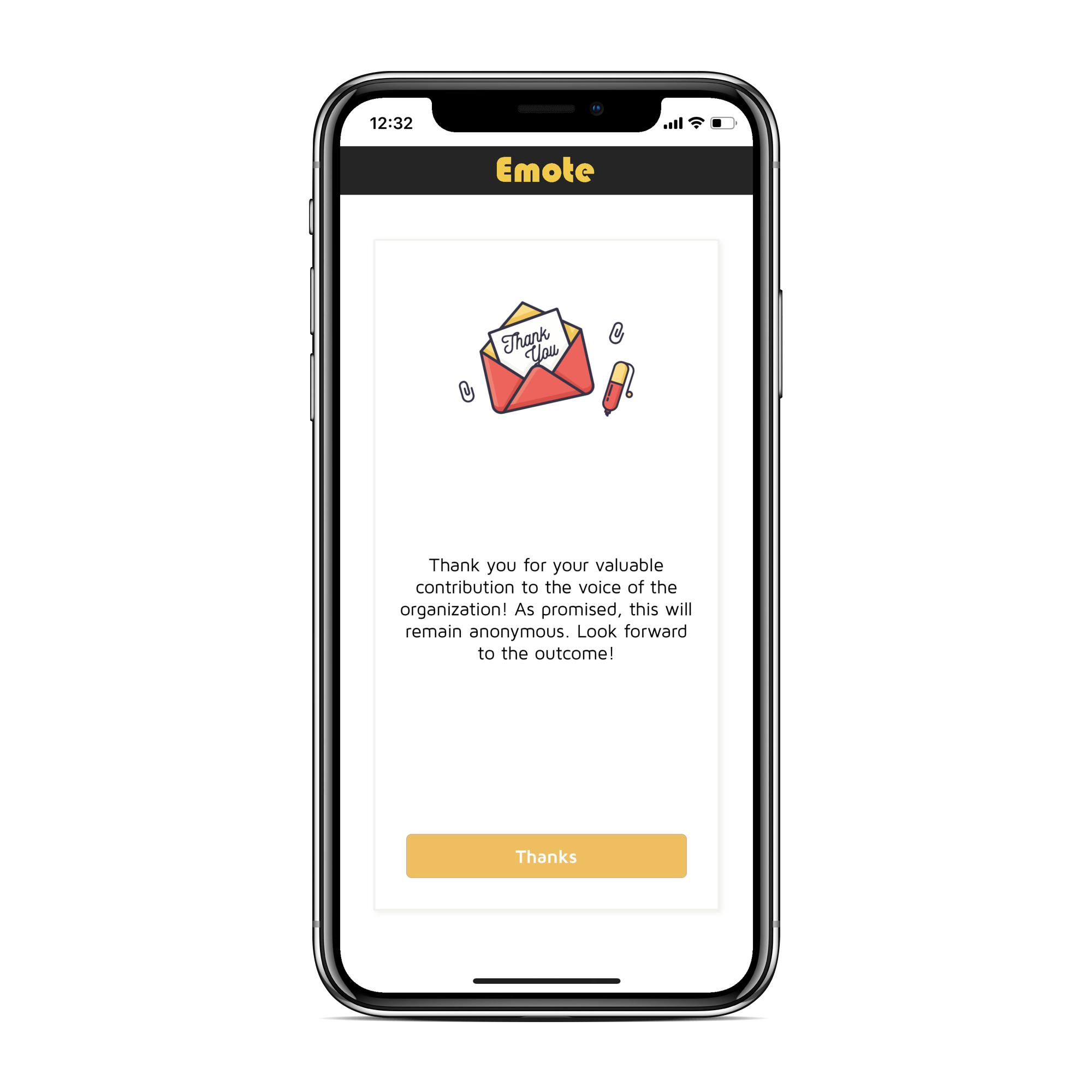An innovative app called Emote AI measuring employee experience has just arrived on the market!
We all know how difficult it is to capture and measure employee experience in our organizations. This app makes it very easy and simple by focusing on emotions that all employees experience at work.
There are no questions asked in this app, employees are not pushed to answer anything – they just can express what they feel in an easy way – using emojis!
As an employer we can follow what employees experience is created in our organization by very useful dashboard. As an employee we also get the reports that mirror our emotions at work so we can clearly see what kind of experience we build in our job.
Emote AI has two founders: Jennifer Thanh and Alexandre Lebee. Jennifer is a People Analytics expert with a PhD in Behavioural Neuroscience. Alex is a bit of a business geek with high technological and analytical skills and experience.
Today, on my blog Jennifer is sharing with us all the story of how the app was born and developed, how it works and in what way organizations and employees can benefit from it.
For more information please check on web page
Karolina Karwowska: Jennifer, tell us please what was the main idea and reason of creating Emote AI? How was it born?
Jennifer Thanh: The idea behind Emote has been evolving for the last 6 months. We were previously colleagues in the same office, so we have a common point of reference for our “employee experience”.
What we noticed is that traditional surveys were not really able to capture what was going on in workplace. Or at least not in time to really do anything about it.
On top of that, my professional experience at the time was guiding me towards understanding what the challenges were from the company’s point of view. I have a background in behavioural neuroscience, so I am a strong believer in using data to firstly paint the picture of what’s going on, and then see where we can improve. But the key to that is first getting the right kind of data, to solve the problem. And that is where I saw the biggest challenge for the company.
I believed that a simple rating that allowed employees to express how they felt, when they wanted to, would provide the greatest insight into how the employee was experiencing their workplace.
Here, we saw the opportunity to bring something different to the employee engagement/employee experience landscape. Alex brought the concept to life with the idea of using an app, and using emojis as a better way of bringing everyday life and culture into the workplace.
Karolina Karwowska: How does your app work? What does it measure and in what way?
Jennifer Thanh: It’s very simple, which is the beauty of it. The employee downloads the app. And anytime they like, they can send feedback, using emojis – sad, frustrated, happy, energetic etc… They have the option to send a short text to explain more if they want.
What we capture is the emotions of the employees, and the kinds of experiences (manager, team events, workplace environment etc) that are driving these emotions.
From an analytical point of view, we follow one metric and that is the mood of the organization. We can slice and dice this data in multiple ways to support the organization in understanding where particular emotional signatures are coming from (e.g. new comers, remote workers etc). The possibilities of analysing this data are enormous. In fact, having one rigorous metric is much better than having 10 different survey questions to intepret and analyse.
Karolina Karwowska : Who can see the real benefits of using such app?
Jennifer Thanh: Any organization that wishes to understand their employees and design an employee experience around that. If you want to know what makes your employees unhappy and what makes them happy. If you want to know this in time to act on it. It’s useful to capture negative emotions while they are fresh, instead of leaving them to evolve into something potential worse.
It is particularly useful for any organization going through change management processes – new tools, new systems, relocations, re-organizations. You can really understand in real time how people are feeling and coping with changes.
ON a daily basis, you can detect changes in the mood of your team, to help manage stress or workload. This is useful for every level of management. On the whole, it will allow you to design the kind of employee experience that will drive happiness and success.
Karolina Karwowska: Can we get any reports out of your app to follow employee experience? What type of data can we have?
Jennifer Thanh: We build working dashboards, custom-made for the organization. This means they are dynamic, interactive and most-importantly, easy to follow. We first derive a metric based on the overall 'mood’ of the organization. At a glance, the user can get a picture of how this changes and then they can zoom into any time point that looks like it needs attention. Following that, they can then drill down at any level, different departments, office location, business unit.
The level of analytics is up to the organization, as we understand all organizations are different and there is no one-size fits all approach.
The organization can have access to the comments (anonymous), but linked to the date and emotion. Following that logic, you can see use the dashboard to zoom in on time periods where the mood is low, and get all the comments sent during that period, that were linked to a negative emotion. You can really understand WHY people are feeling the way they do.
We have a short video demo on the website of the kind of dashboard you might get:
Karolina Karwowska: In what way using only emojis we can track employee experience in the organization?
Jennifer Thanh: Essentially, the employee experience is the human experience at work. We believe that this is driven by emotions. We collect emotional feedback and return it in a clear, structured way that allows you to see exactly what employees are experiencing in real time.
You can follow this experience at any level – daily, monthly or even over the employee journey from onboarding to promotions cycles. You can capture moments where your organization is really succeeding in driving employee happiness at work, and where they may be lacking.
It gives you an opportunity to understand your different employee segments.
Based on this understanding, you can design an employee experience that will drive happiness and success at work.
Karolina Karwowska: What differentiate your app from other tools on the market that measure employee engagement, satisfaction or happiness?
Jennifer Thanh: We see that apps have become really popular for employees these days. We love that companies are breaking away from using the traditional survey methods and embracing the idea of giving the power back to the employee.
Many companies also recognize that feedback should be continuous, and not limited to just a few times a year. Thats great!
I think with Emote, we have taken all of these concepts and taken them further. I believe we are one of the only apps that allows employees to give feedback whenever they want, instead of when prompted by the company.
We really believe that the employee needs to be in the driving seat of this process to capture their honest feedback.
I believe we are also the only app (I’ve seen) that focuses on emotions and uses emojis.
This is a new approach that we are only just seeing in marketing right now, so I think we are a little ahead of the game in HR. However, given the amount people are on their phone using emojis on a daily basis, I think this will be the new norm. And we are really excited about that future. It truly embraces not just an employee experience, but a human experience.
Karolina Karwowska: Thank you Jennifer for sharing information about your new app and giving us the full picture of its benefits.
We should also add and encourage everyone to try it free for 60 days and check how it works in your organization!

